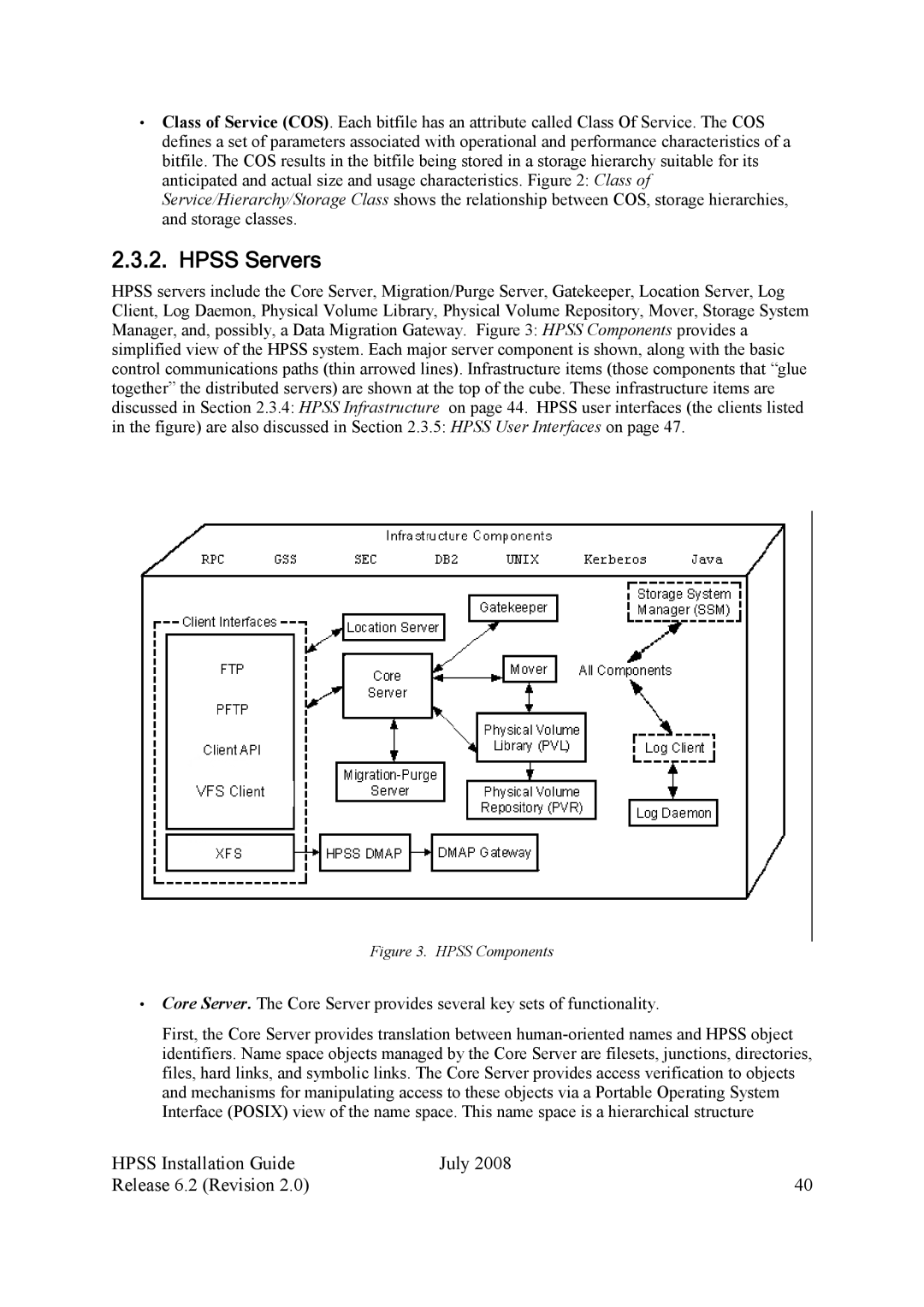
•Class of Service (COS). Each bitfile has an attribute called Class Of Service. The COS defines a set of parameters associated with operational and performance characteristics of a bitfile. The COS results in the bitfile being stored in a storage hierarchy suitable for its anticipated and actual size and usage characteristics. Figure 2: Class of Service/Hierarchy/Storage Class shows the relationship between COS, storage hierarchies, and storage classes.
2.3.2. HPSS Servers
HPSS servers include the Core Server, Migration/Purge Server, Gatekeeper, Location Server, Log Client, Log Daemon, Physical Volume Library, Physical Volume Repository, Mover, Storage System Manager, and, possibly, a Data Migration Gateway. Figure 3: HPSS Components provides a simplified view of the HPSS system. Each major server component is shown, along with the basic control communications paths (thin arrowed lines). Infrastructure items (those components that “glue together” the distributed servers) are shown at the top of the cube. These infrastructure items are discussed in Section 2.3.4: HPSS Infrastructure on page 44. HPSS user interfaces (the clients listed in the figure) are also discussed in Section 2.3.5: HPSS User Interfaces on page 47.
Figure 3. HPSS Components
•Core Server. The Core Server provides several key sets of functionality.
First, the Core Server provides translation between
HPSS Installation Guide | July 2008 |
Release 6.2 (Revision 2.0) | 40 |
